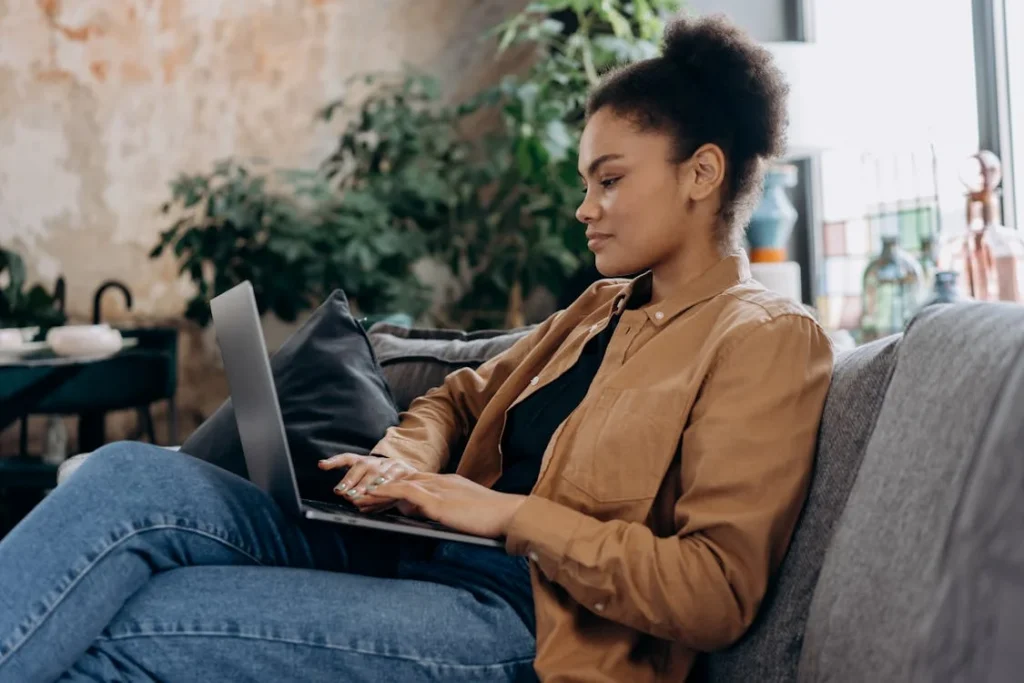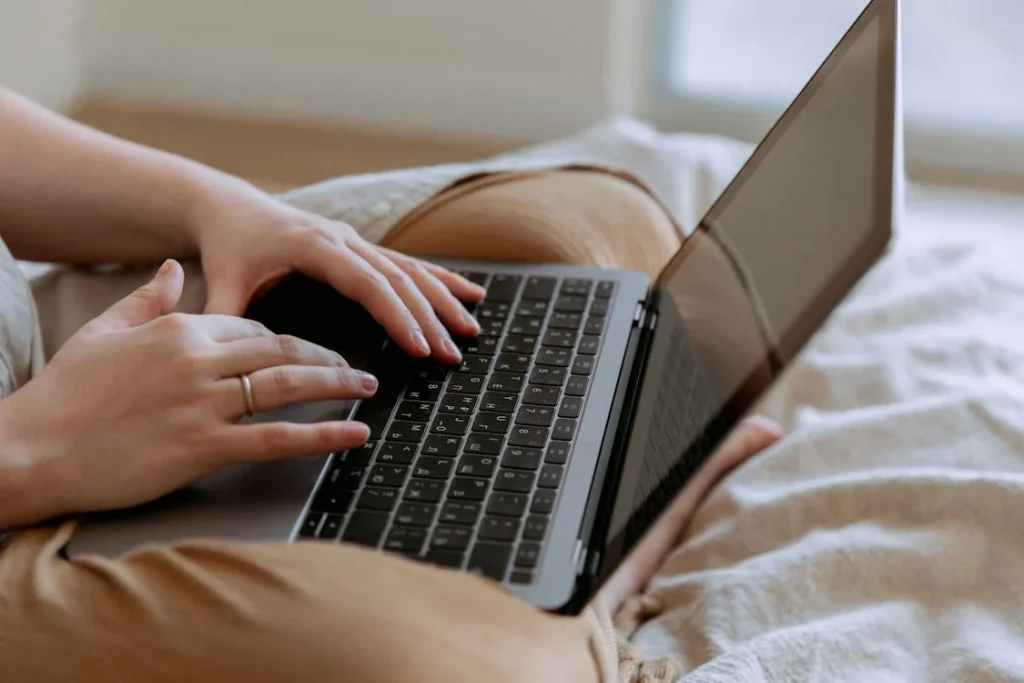Whether you’re catching up with a friend or touching base with a colleague in a less formal context, mastering the art of informal email communication can make your exchanges more effective and enjoyable. In our hyper-connected world, emails are not just a form of professional correspondence but also a bridge for more personal interactions. That’s why understanding the nuances of informal emails is crucial.
In this guide, we’ll explore everything you need to know about preparing engaging, respectful, and appropriate informal emails. From choosing the right tone and subject lines that catch attention, to the subtleties of greetings and sign-offs that connect with your readers—whether they’re close friends or simply people you know more casually. We’ll also dive into common pitfalls to avoid, ensuring your emails always hit the right note. Plus, you’ll find practical tips on leveraging email technology to keep your communications smooth and organized.
Ready to write emails that convey your message and strengthen your connections? Let’s get started!
Informal email essentials
An informal email is characterized by a conversational tone, making it a natural choice for communication with people you know well, such as friends, family, or colleagues with whom you are familiar. Unlike the structured and often strict format of a formal email, an informal email mimics everyday speech and supports a more relaxed behavior. Below are the key components of an informal email:
- Subject line. Sets the tone and purpose of your email. It should be eye-catching yet straightforward, reflecting the casual nature of your message.
- Greetings. Start your email on a personal note. Tailor your greeting to reflect your relationship with the recipient.
- Body text. The core of your message is where you express your thoughts clearly and succinctly. Keep it engaging and directly relevant to the recipient.
- Closing. A warm sign-off that matches the tone of your entire message.
- Signature. A simple name sign-off, or a more personalized closing depending on your relationship with the recipient.
Key considerations for informal emails
Writing in a laid-back style doesn’t mean abandoning all rules. Keeping clarity and thoughtfulness is crucial, especially considering how your words might come across without the non-verbal cues of face-to-face communication. Each element of your email, from the subject line to the signature, should be carefully prepared with your audience in mind, ensuring that your message is relatable and respectful.
Furthermore, even in casual emails, it is important to keep professionalism where necessary, adapt the level of informality based on the recipient, and select an appropriate tone. This balance ensures that while your email feels personal and direct, it stays suitable for its intended purpose. Understanding these key aspects prepares you to communicate more effectively in a relaxed yet thoughtful manner.
The subject line: Your email’s first impression
The subject line acts as the headline of your email, playing a critical role since it’s the first element your recipient will see. Its effectiveness can greatly influence whether your email is opened immediately or overlooked. Unlike formal emails, which require a serious tone, informal emails allow for greater creativity and personalization, especially when the sender and recipient are acquainted. Here are some tips for preparing effective subject lines:
- Be engaging. Use a lively tone that reflects the relationship you share with the recipient. A well-chosen subject can spark interest and encourage the recipient to read further.
- Stay clear and concise. Even with a casual tone, clarity is key. Make sure the subject line accurately reflects the content of your email.
- Incorporate personal touches. Employing a shared memory or inside joke can make the subject line feel exclusive and tailored, which is particularly effective among close contacts.
Examples of informal subject lines
For a friend or close colleague:
- “Guess who’s back in town?”
- “Movie night this Friday?”
- “Time for our annual road trip!”
For someone you know less formally:
- “Quick question about our project next week”
- “Available for a coffee chat this Wednesday?”
- “Update on the team outing details”
The choice of subject line depends largely on your relationship with the recipient and the context of your message. Always aim to balance familiarity with appropriateness, ensuring your email is inviting yet respectful of the recipient’s expectations.

How to transition from a formal to an informal tone
As you become more comfortable with the components of informal emails and crafting engaging subject lines, it’s also important to understand how to fluidly transition from a formal to an informal tone. This skill is particularly crucial for those used to more formal settings but who need to adjust their communication style based on the relationship and context. Here are some tips to help adapt your tone appropriately, ensuring your emails resonate well with the recipient:
- Understand your audience. The first step in deciding whether to use a formal or informal tone is to consider your relationship with the recipient. Is this a colleague you’re familiar with, or a new contact? The answer will guide your tone.
- Start with a semi-formal tone. If unsure, begin with a semi-formal tone. You can gradually become more informal as the conversation progresses and as you gauge the other person’s comfort with casual language.
- Use informal language sparingly at first. Introduce informal expressions and slang gradually. Starting with a too-casual approach can be off-putting; it’s easier to relax your tone later than to make it more formal.
- Mirror the recipient’s tone. A useful strategy is to reflect the tone used by the recipient. This can naturally guide your language choice and ensure you stay on the same level of formality or informality.
- Be mindful of context. Even if you know the recipient well, the context of your email may require a more formal or restrained tone. For example, discussing professional matters might necessitate a shift back to formality.
Following these guidelines will help you smoothly transition from a formal to an informal tone, ensuring your emails are always appropriately pitched.
Informal email greetings: Making a personal connection
Choosing the right greeting in an informal email is key to setting the tone for your message. In informal communications, the language often mirrors everyday conversations, which allows for a variety of creative greetings. Here’s how to start your emails with a touch of personal flair:
- Personalize your approach. Start with a greeting that reflects your relationship with the recipient and the context of your message. This could range from a simple “Hi” to more playful or intimate expressions.
- Flexibility in punctuation. Unlike formal emails, which usually have a comma after the greeting, informal emails let you use exclamation marks to show excitement or skip punctuation altogether for a more relaxed feel.
- Ask about them. It’s common to inquire about the recipient’s well-being as part of the greeting. This adds a warm, personal touch, though it’s not required.
- Reflect on your real-life interaction. Choose a greeting that matches how you would speak to the person in real life. This helps ensure your written words mirror your usual verbal communication, promoting a genuine connection. Adjust the formality based on your familiarity with the person and the purpose of your email.
Examples of informal email greetings
For close friends or colleagues:
- “Hey Max! Long time no see.”
- “What’s up, Claire?”
- “Hola Marco, how’s it going?”
For acquaintances or less formal professional contacts:
- “Hello Sam, hope all is well.”
- “Hi Pat, got a minute?”
- “Good to hear from you, Alex!”
The best greetings are those that make the recipient feel valued and appreciated while setting the stage for the rest of your message. If ever in doubt about the formality of your greeting, consider how you interact in person and let that guide your choice of words.
Preparing the body of an informal email
The body of an informal email is your opportunity to communicate in a direct and personal manner. Here, you articulate the purpose of your email using a conversational tone that compares face-to-face interactions. Aim to keep this section concise—ideally under 200 words—to ensure it stays direct and engaging.
Effective communication strategies
To ensure that your message is both impactful and engaging, it’s important to employ specific communication strategies. These strategies will help you express your thoughts clearly and keep the recipient’s interest throughout the email. Here are some key tactics to consider:
- Start directly and engage quickly. Begin your message with the main point or a personal update to immediately engage the reader. Use phrases like “Just thought I’d share…” or “It’s been a while, so I figured I’d catch you up on…”
- Tailor your message. Adjust your language and content based on your relationship with the recipient and the context. The informal nature allows for a personal touch, so feel free to include light-hearted comments or relevant emojis, especially when communicating with close friends or people you know.
- Keep it relevant and relaxed. While the tone should be laid back, ensure every part of your message has a purpose. Avoid straying off-topic, but incorporating a personal anecdote or an emoji can improve the reader’s engagement and communicate your feelings more vividly.
- Visuals and emojis. In contexts where it’s appropriate, such as messages to friends or more relaxed business communications, adding images or emojis can make your email feel friendlier and more expressive.
- Remember “BARC” to stay on track. Use this acronym as a quick checklist for informal emails:
- Brief. Keep it concise but informative.
- Audience. Always consider who you’re writing to.
- Relevant. Stay on topic to keep the reader engaged.
- Casual. Keep a relaxed tone that mirrors your relationship.
Implementing these strategies will help you create body text that not only conveys your message effectively but also resonates well with your audience, strengthening your connection through brilliant communication.
Common mistakes to avoid in informal emails
Having explored the nuances of preparing engaging informal emails, it’s crucial to also be aware of the pitfalls that could detract from your message’s effectiveness. Avoiding these common mistakes will help guarantee your informal emails hit the right balance between friendly and professional:
- Overusing slang. While it’s perfectly acceptable to use slang when communicating with close friends, be careful with its use in other contexts. Excessive slang can confuse your message and appear unprofessional. Strive for a balance that keeps clarity without being too strict.
- Being too casual. Informality should not mean a lack of professionalism. It’s important to gauge the level of casualness appropriate for your relationship with the recipient. While a laid-back tone is suitable for close contacts, support a more structured approach when emailing professional acquaintances or those you don’t know well.
- Misunderstanding the tone. The lack of face-to-face cues means your words must be chosen carefully to avoid misinterpretation. What might seem humorous or sarcastic in person can often be misunderstood in written form. When in doubt, opt for clarity over cleverness to ensure your true intent is communicated.
- Inappropriate use of humor. Humor can improve an email, making it more enjoyable to read, but inappropriate jokes or comments can backfire. Always consider the recipient’s background, preferences, and your relationship’s nature before adding humor to your emails.
- Ignoring email length and timing. Long-winded emails can weaken the impact of your message, especially in an informal context where brevity is appreciated. Keep your emails concise and to the point. Additionally, consider the timing of your email. Sending non-urgent emails late at night or on weekends may not be ideal, as it might disrupt the recipient’s personal time.
By steering clear of these common errors, you can improve the effectiveness of your informal email communications, making them more likely to be well-received while preserving the integrity of your professional relationships.

Creating the perfect informal email sign-off
Ending your informal email effectively not only reinforces the tone of your entire message but also leaves a lasting impression. Unlike more formal conclusions in business emails, informal sign-offs can bring personal warmth and creativity, highlighting a sense of closeness and personal touch. Consider these suggestions for creating an effective email closing as you reflect on the warmth and personality of your relationships:
- Choose your sign-off wisely. Tailor your closing based on your relationship with the recipient and the context of the email. Express enthusiasm, offer well-wishes, or show appreciation according to the situation:
- “Can’t wait for our weekend adventure!”
- “Stay awesome!”
- “Thanks a million for your help!”
- Personalize your signature. Your signature can go beyond just your name to include a personal touch or sentiment that reflects the nature of your relationship:
- “Hugs, [Your name]”
- “With love, [Your name]”
- “Cheers, [Your name]”
- Example sign-offs:
- For a close friend. “Can’t wait to hear all your news! Take care, [Your name]”
- After receiving help. “Really appreciate your help today! You’re a lifesaver. Best, [Your name]”
- For a casual acquaintance. “Thanks for the chat today. Hope to see you soon! Cheers, [Your name]”
- Consistency matters. Ensure that the closing matches the overall tone of your email. A lively closing complements a cheerful body, improving the message’s coherence.
- Choosing sign-off or signature. Not every email requires a sign-off and a signature. Depending on the context and your familiarity with the recipient, sometimes a simple “Thanks” or “See you soon” is enough.
By thoughtfully creating your informal email endings, you ensure that your messages are well-received and leave a positive, lasting impression. The sign-off is your final opportunity to reflect the tone and warmth of your relationship, making each email a bridge to stronger connections.
Mastering informal email expressions
After perfecting the structural elements of your informal email, from the subject line to the sign-off, it’s crucial to also focus on the expressions that populate the content of your email. Selecting the right expressions can make your emails sound more personable and ensure your point comes across clearly without losing the casual tone.
Engaging responsively
Suppose you sent an email a few days ago and haven’t received a reply yet. To remind the recipient politely while keeping a friendly tone, consider using phrases like:
- “Hope this message finds you well! Just bumping this to the top of your inbox.”
- “Wanted to make sure my last message didn’t get lost in the shuffle!”
- “Quick nudge on this—would love to hear your thoughts when you get a chance.”
Apologizing informally
If you’re the one behind on correspondence, it’s polite to acknowledge the delay with a light-hearted yet sincere apology:
- “Oops, looks like my response got buried! Thanks for your patience.”
- “Apologies for the slow reply—I’m just surfacing from a mountain of emails!”
- “Sorry for the delay, things have been hectic on my end. Thanks for waiting!”
Suggesting urgency without pressure
When your message requires prompt attention but you want to keep the tone relaxed, phrases like these can encourage a quicker response without adding stress:
- “When you have a moment, I’d love to get your input on this!”
- “No rush, but I’d appreciate your thoughts on this by Friday if possible.”
When integrating informal expressions into your emails, it’s vital to ensure they align with how you communicate in person. This consistency helps in selecting a genuine and personable tone. Remember, the goal is to make your emails resonate more personally with the recipient, ensuring your intentions and tone are clear and approachable.
Final checks before sending your informal email
Before you hit ‘send’ on that email you’ve crafted with care, it’s crucial to run through a final checklist. This step ensures that your message is not only free of errors but also perfectly tuned to achieve its intended effect. Below are some essential pre-send steps to consider:
- Verify recipient details. Double-check the email addresses of your recipients. A small typo could mean your email goes astray, potentially causing confusion or a missed connection.
- Attachments and links. Ensure all attachments are included before you send the email. It’s easy to mention an attachment in the body and forget to attach it. Similarly, verify that any links you include are correct and functional.
- Use Cc/Bcc appropriately. Use the Carbon Copy (Cc) feature to include others transparently in the conversation or the Blind Carbon Copy (Bcc) to discreetly include others. This can be particularly useful in informal group communications where you want to keep some recipients’ details private.
- Proofread thoroughly. Even in casual emails, clear and correct writing reflects well on you. Take a moment to review your spelling and grammar. Simple mistakes can distract from your message, so aim to polish your email just enough to show you care about the details. To ensure everything is perfect, consider using our document revision service for a final check.
- Additional considerations:
- Timing of your email. Consider the timing of your email. Sending late at night or early in the morning might not be the best choice depending on the recipient’s time zone and your relationship.
- Follow-up reminders. If your email requires a response or action, it might be helpful to set a reminder for yourself to follow up. This ensures nothing falls through the cracks if a reply isn’t forthcoming.
By sticking to these practical steps, you ensure that each email you send is free from basic errors and optimized for a positive response. Remember, the way you manage your email interactions can significantly influence your personal and professional relationships. Taking the time to fine-tune your message before sending makes all the difference in preserving and improving these connections.

Technology tips for effective email communication
Beyond mastering the art of email content, harnessing the full capabilities of your email software plays a key role in effective communication. Explore practical technology tips that streamline your email management and improve responsiveness. Whether you’re coordinating across time zones, confirming message receipts, or organizing your inbox, these strategies will empower you to handle email communications with greater efficiency and ease:
- Scheduling emails. If you’re working across time zones or have a message that isn’t urgent, use your email’s scheduling feature to send it at a more appropriate time. This ensures your emails are read at a time convenient for the recipient.
- Using read receipts. For important emails where you need confirmation that your message has been received, consider using read receipts. However, use this feature sparingly as it can sometimes be seen as pushy.
- Organizing threads. Keep your email conversations tidy and easy to follow by properly organizing threads. This is particularly useful in ongoing discussions with multiple participants.
- Creating email folders. Use folders to categorize your emails. This helps in managing your inbox efficiently, allowing you to prioritize and easily access archived communications.
- Using filters and labels. Set up filters to automatically sort incoming emails into the appropriate folders, and use labels to mark emails by priority or category, which helps in quicker return and response.
- Mobile accessibility. Ensure that emails are optimized for mobile viewing, acknowledging that many professionals access their emails on mobile devices. Test how emails appear on smaller screens and ensure attachments can be easily opened on smartphones and tablets.
- Integration with other tools. Improve workflow efficiency by integrating email with other tools like calendars, task managers, or CRM systems. This helps create a seamless ecosystem of productivity tools that complement each other.
- Security measures. Implement security measures such as two-factor authentication and secure password practices, especially important in contexts where sensitive information is exchanged.
- Automation features. Use automation features within your email system to send routine communications like birthday wishes or meeting reminders, saving time and personalizing your interactions.
By leveraging these technological tools, you can make your email communication more effective, organized, and responsive, ensuring that every message reaches its intended recipient with the desired impact.
Informal Email Examples
Before we wrap up, let’s look at some practical examples of informal emails. These will illustrate how to apply the informal tone and personal touches we’ve discussed, whether catching up with a friend or communicating with a colleague in a semi-casual context.
Example 1 – Catching up with a friend:
Subject: Quick Catch-up This Weekend?
Hey Alex!
Long time no see! How have you been? I was thinking we could grab a coffee this Sunday afternoon if you’re free. It’s been too long, and I’d love to hear about your new job and everything else!
Let me know if that works for you.
Cheers,
Jamie
Example 2 – Semi-casual professional follow-up:
Subject: Touching Base on Next Week’s Presentation
Hi Pat,
Hope this week is treating you well! I wanted to touch base about the presentation next Tuesday. Do you need any specific prep from our side? Also, if you’re up for it, maybe we can do a quick call on Monday to finalize the details.
Thanks,
Chris
Each example reflects a relaxed yet thoughtful approach to writing. Remember, the key to effective informal emails is balancing a friendly tone with clarity and relevance to the context of your relationship and the subject matter.
Conclusion
| Congratulations on mastering the nuances of informal email communication! You are now well-prepared to create emails that convey your message effectively and strengthen personal and professional bonds. Informal email writing requires a balance of conversational tone, personal touch, and professionalism. Each email offers a chance to connect and leave a lasting impression. Stick to the principles of clarity, engagement, and appropriateness, letting your unique personality shine within the bounds of email etiquette. Equipped with strategies from preparing compelling subject lines to selecting the perfect sign-off, you’re ready to handle any email conversation with confidence. Keep practicing, experiment with different styles, and ensure your communications stay genuine and thoughtful. Here’s to your success in turning every email into a bridge for meaningful connections! |
